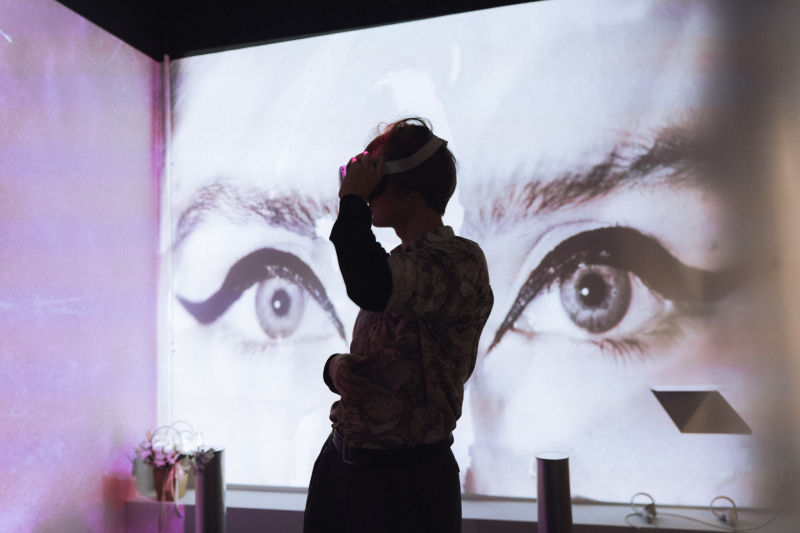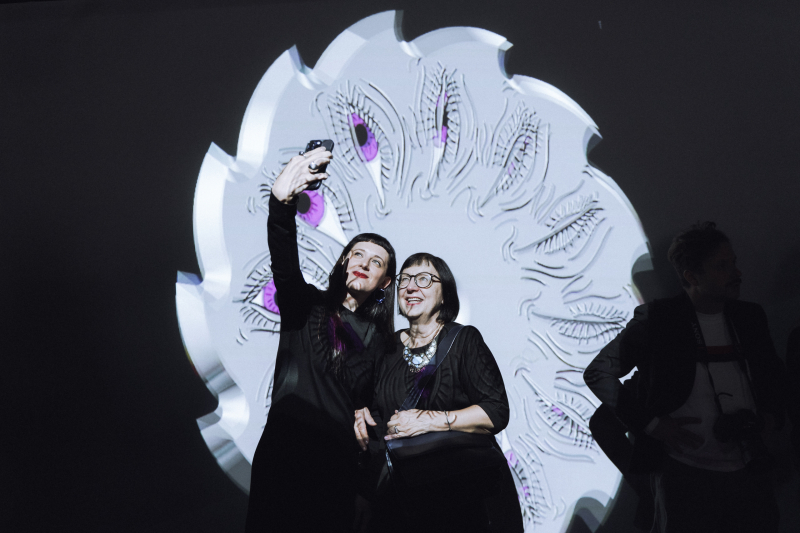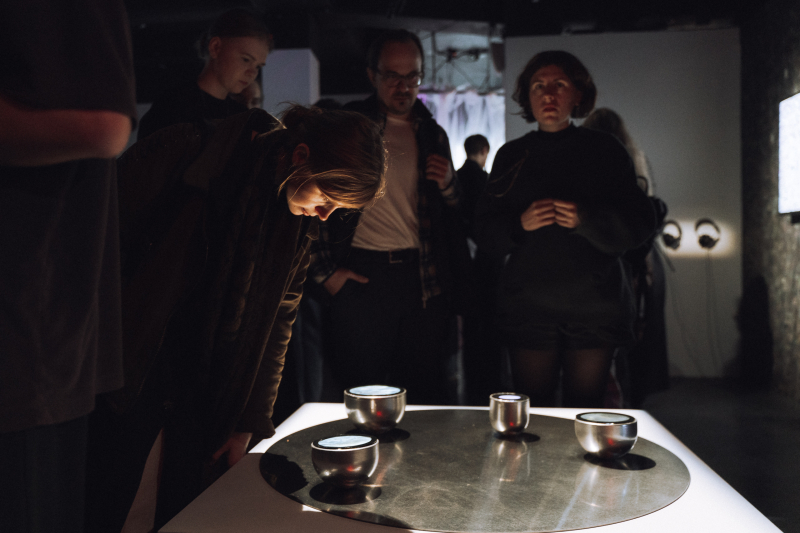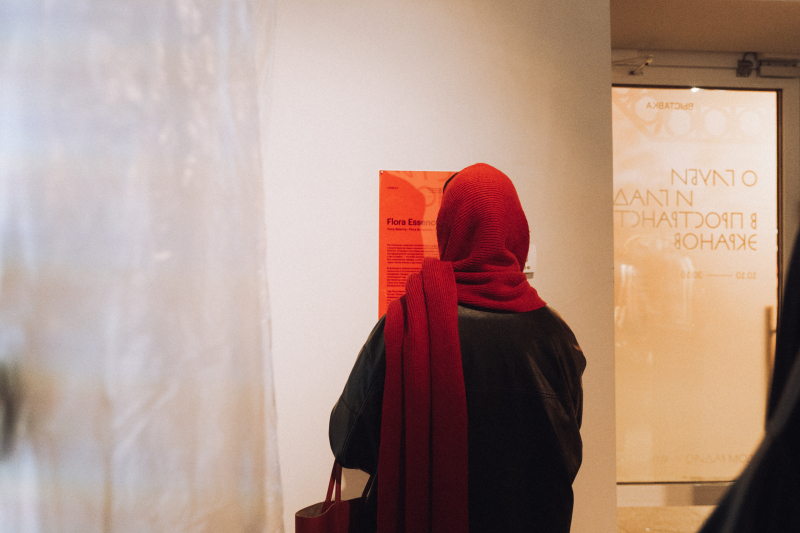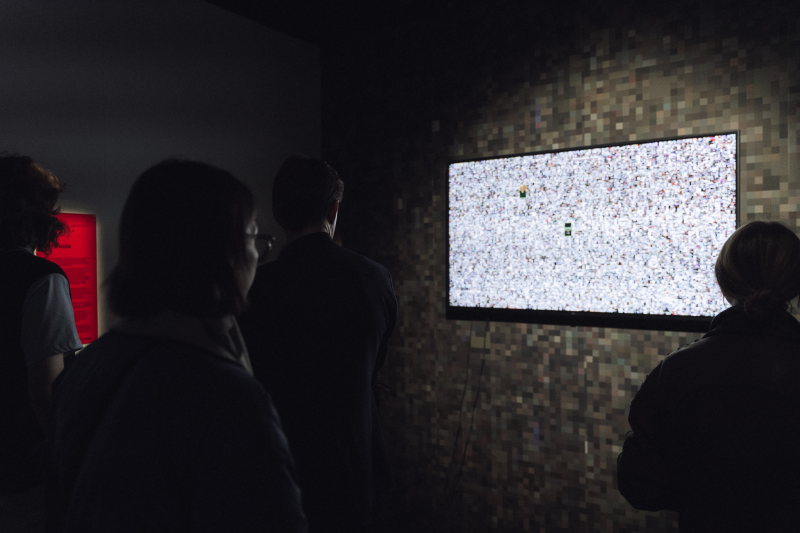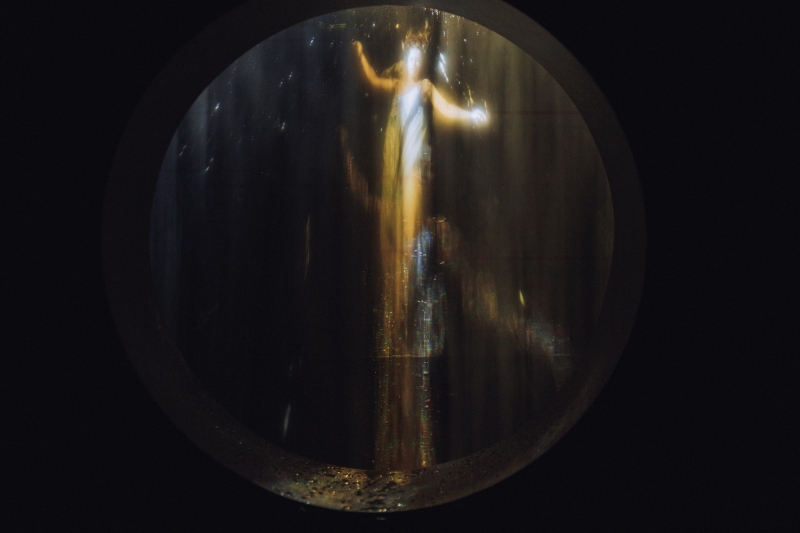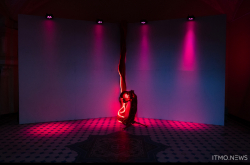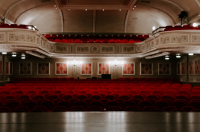The concept of “screen studies” is closely linked to electricity, the central theme of Dom Radio’s educational projects in 2024. On the one hand, screens resist technological advances by sticking to their primitive design; on the other, they are constantly evolving, becoming thinner and more sensitive, as well as gaining flexibility and new sensory features.
“The main hero of the exhibition is a screen. We collaborated with artists to look into the hidden features and artistic potential of screens, break free from their usual “invisible” and dependent nature, and start a conversation about their autonomy and duality. We live in a world of large and small screens, thus I feel it’s crucial to explore what shapes and replicates our reality today,” said Asya Kaplan, a curator of the exhibition.
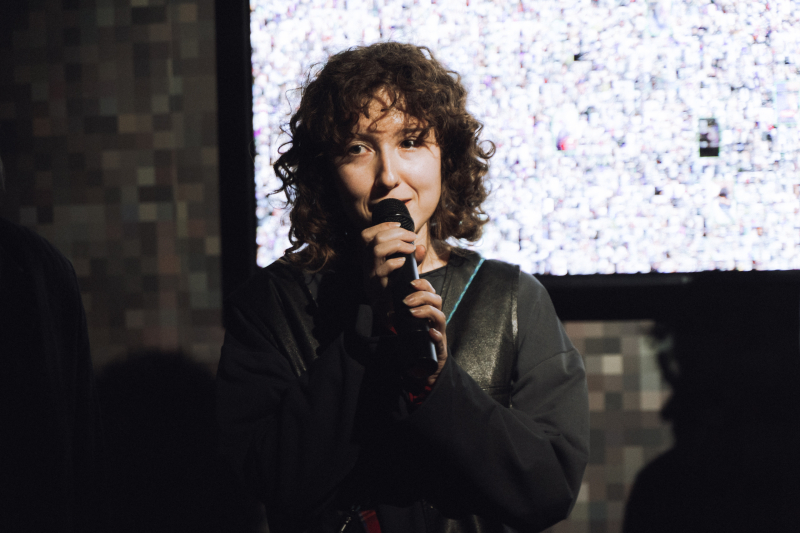
Asya Kaplan. Photo by Lyudmila Burchenkova
While screens are usually seen as purely technical tools, artists study them as artistic objects: they explore natural sources of reflection and image, the changing nature of scenes, endow them with shape and depth, and dissect them into pixels.
On display at the exhibition are projects that combine analog and traditional media with generative art and VR, sound sculpture, alternative screens, handmade pixels, video art, and interactive spaces. Some of the exhibits include: a water-based screen; a screen that reacts to human presence; and various digital and virtual screens.
The exhibition sums up the results of audiovisual experiments conducted by a team of 12 artists from ITMO’s Art & Science and Dom Radio. At their meetings, the participants turned to media and film theory, as well as screen studies, and attempted to define what a screen is and whether it can exist without visual experience (through sound or touch) or without a projector or pixels. Nine artists infused their interests – be it big data, science, sound, digital technology, poetry, or human-nature interactions – into their works.
The display showcases the works of ITMO’s Master’s students, as well as other artists.
“I’m a Master’s student at the National University of Science and Technology MISiS and as an artist, my primary focus is on research and data archeology. One of my works involves the study of 17,000 unread emails in Gmail, while another, which is presently on exhibit, is about a YouTube viewing history. The laboratory’s theme was completely in line with my interests and fields of study. Its approach, which included intense Zoom sessions, theoretical work, brainstorming, and a final showcase, seemed quite productive. My project critiques technology and questions the idea of linear technological progress,” noted Viktor Kertanov, one of the exhibition’s artists.

The teams of the Art & Science Center and Dom Radio. Photo by Lyudmila Burchenkova
The exhibition will run till October 30 at ITMO’s Art & Science Center, Birzhevaya Liniya 16. Entry is free, but registration is compulsory. To register before a visit – as well as to sign up for any of the several scheduled lectures and performances – visit the website of Dom Radio.
